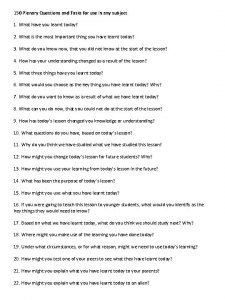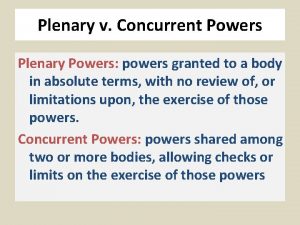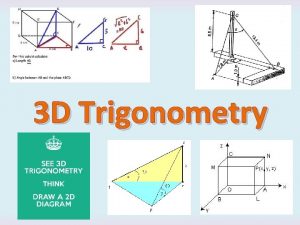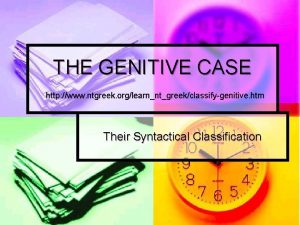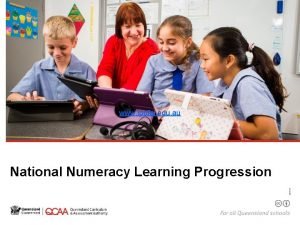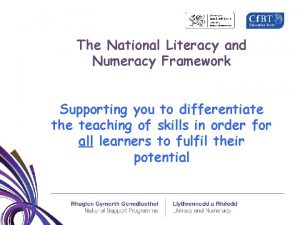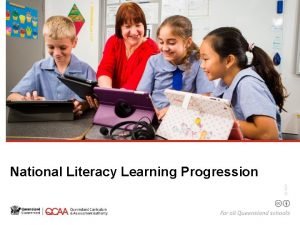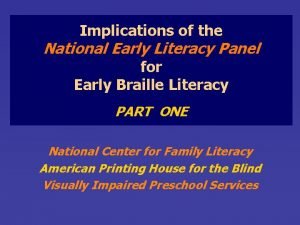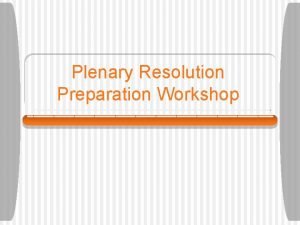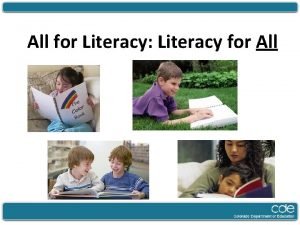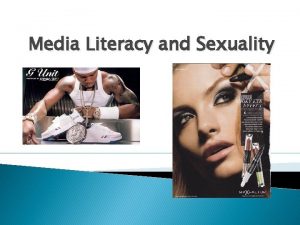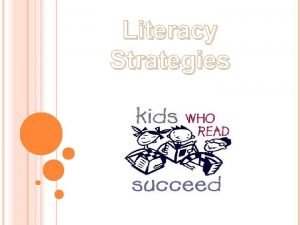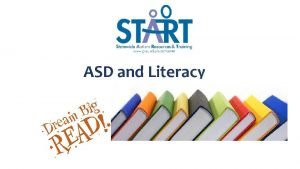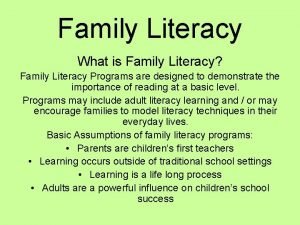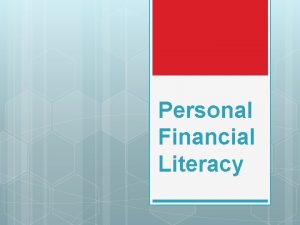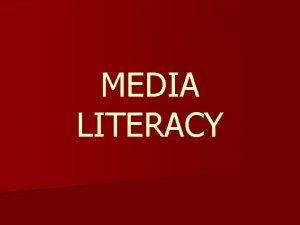The Plenary The National Literacy Strategy The Plenary













- Slides: 13

The Plenary The National Literacy Strategy The Plenary

Aims: • To identify the key features of effective plenary sessions • To suggest some ideas for plenary activities The National Literacy Strategy The Plenary

Activity • Which aspects of the plenary are well developed in your class/school? • Which aspects would you like to develop further? The National Literacy Strategy The Plenary

Key priorities from the HMI report: • ‘The plenary continues to be one of the weakest parts of the literacy hour’ • ‘Unsuccessful plenaries miss opportunities to extend pupils’ contributions when they present their work, and fail to involve other pupils. Where there have been too many tasks earlier in the lesson, the majority of the pupils have not been involved in what is being discussed’ • ‘Plenaries are often too short and teachers frequently are doing no more than going through the motions of conducting one’ The National Literacy Strategy The Plenary

Key priorities from the HMI report cont. . . • ‘The best plenaries make a significant contribution to the pupils’ learning. Invariably, they are successful because the pupils have shared a common task earlier in the lesson. The teaching is highly purposeful: there are clear objectives for the lesson and these are revisited explicitly in the plenary’ • ‘Successful plenaries also review the learning and reinforce expectations’ • ‘Effective plenaries also motivate pupils for the next lesson through homework or questioning’ The National Literacy Strategy The Plenary

When planning the plenary. . . • provide a range of opportunities to review learning • identify questions to consolidate and extend literacy skills • build links between plenary and other elements of lesson The National Literacy Strategy The Plenary

During the plenary. . . • challenge the children to justify • • their ideas provide feedback to clarify and extend the children’s thinking assess the learning against the lesson objective The National Literacy Strategy The Plenary

After the plenary. . . • review success and record information • use the information to inform future plans The National Literacy Strategy The Plenary

Effective plenaries. . . • return to the learning • connect the learning from this lesson to prior knowledge • help children to make generalisations, and establish theories and conclusions • enable children to use their new learning to test prior knowledge The National Literacy Strategy The Plenary

Video Observation • • • The National Literacy Strategy As you are watching the video, identify: two strengths of the plenary; anything you would do differently; what the teacher needs to do next. The Plenary

Ideas for plenaries The National Literacy Strategy The Plenary

Share your ideas! The National Literacy Strategy The Plenary

Home-time!! The National Literacy Strategy The Plenary
 Information and media literacy similarities
Information and media literacy similarities Berlos model of communication
Berlos model of communication What is a characteristic of people media?
What is a characteristic of people media? Cyber literacy for the digital age
Cyber literacy for the digital age Plenary inspiration
Plenary inspiration Plenary ideas
Plenary ideas Plenary questions
Plenary questions Plenary power
Plenary power Trigonometry starter
Trigonometry starter Genitive case meaning
Genitive case meaning National numeracy progressions
National numeracy progressions Literacy numeracy framework
Literacy numeracy framework National literacy learning progressions
National literacy learning progressions National early literacy panel
National early literacy panel






